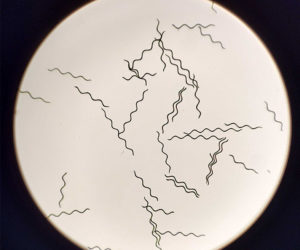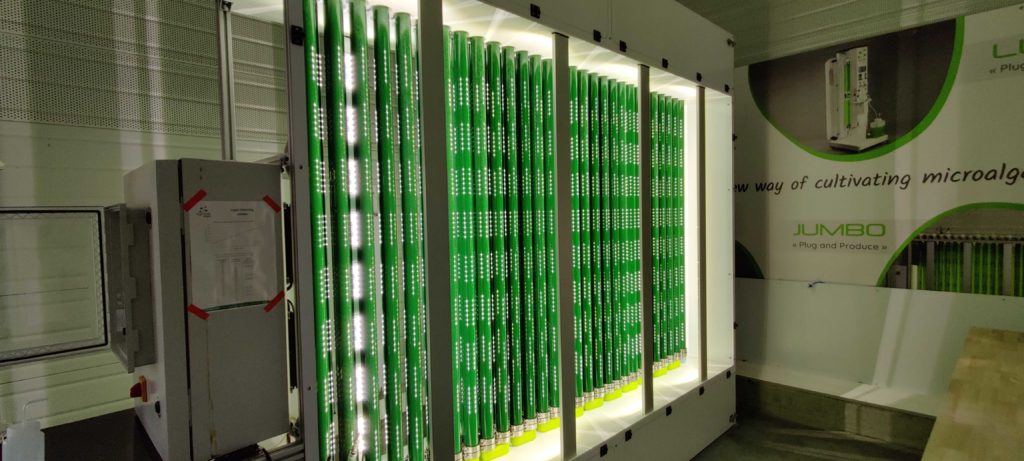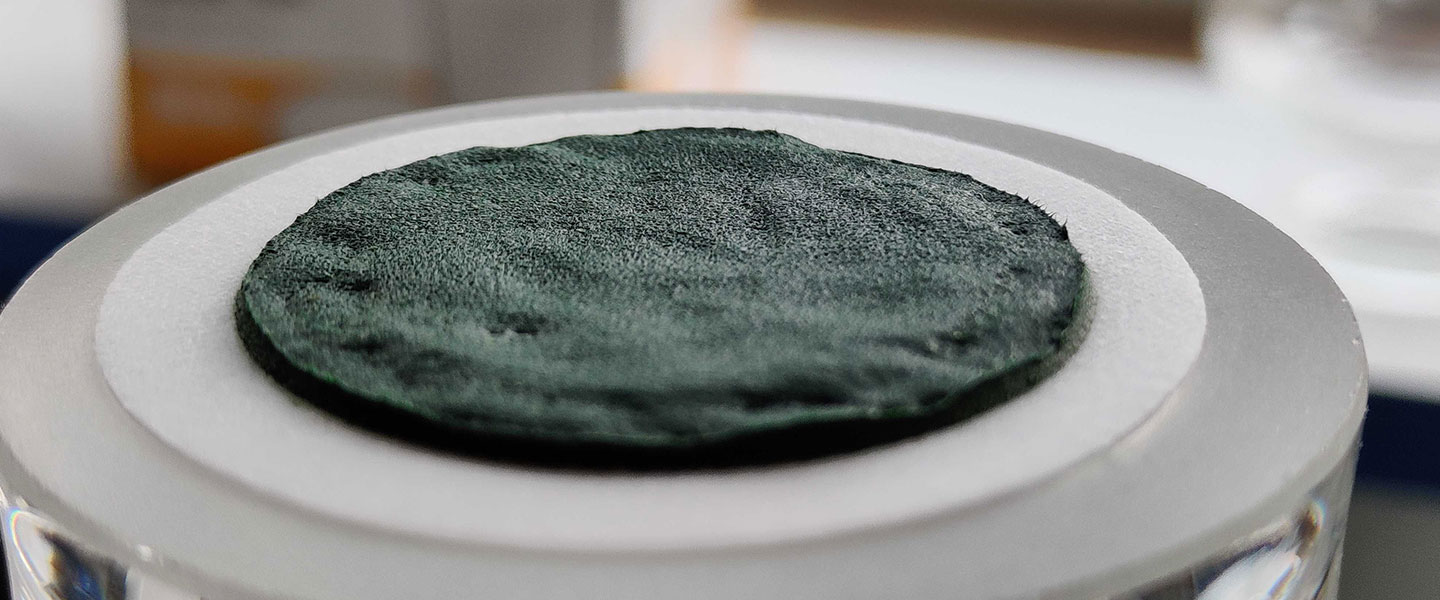Spirulina is THE superfood people are talking about today. It is one of the four microalgae authorised for human consumption. Full of benefits for humans, why is it getting so much attention?
What is spirulina?
Spirulina is a filamentous cyanobacteria that is over 3.5 billion years old. Yes, you read that correctly, Spirulina is not exactly a microalga because its genetic information is not stored in a nucleus. It is a prokaryotic organism. Unlike Chlorella, for example, which is a eukaryotic organism and has a nucleus. By the way, if you want to know more about how to cultivate chlorella, you can find more information here.
Spirulina is the common name given to Arthrospira platensis. Its name is derived from its easily recognisable spiral shape of about ten micrometres, almost five times smaller than the diameter of a single hair as you can see in the photo below.
It is also sometimes referred to as “blue-green algae” because of its specific blue-green pigments such as phycocyanine.

Spirulina under the microscope
Consumption of Spirulina
Once cultivated and harvested, there are several ways to consume Spirulina: either fresh and still with a lot of water, sometimes just rinsed (in the form of spreads), or dry after having passed through a laboratory oven, for example (in capsules, in flakes, or in the form of small vermicelli). It can be eaten on its own, sprinkled on different kinds of food (juice, bread), or incorporated as an ingredient in different sweet or savoury recipes.
Although it is very fashionable at the moment, it is not a new food. The Mayans and Aztecs were cooking Spirulina-based preparations that they called “tecuitlatl” long before the arrival of the Spaniards in the 16th century.
Regular consumers of algae, these civilisations harvested Spirulina from the surface of the water in lakes for example, and then dried it in the sun.
Spirulina is still widely consumed in Africa, like in Chad or Niger in most local dishes.
Spirulina, the super-hero of microalgae
If Spirulina is so successful today, it is because of its exceptional nutritional properties!
Spirulina, stronger than Popeye’s spinach
Natural and easy to produce, 100 grams of Spirulina contains 63 g of protein compared to 22 g for chicken and 13 g for the same amount of egg. It is a complete food. In addition to having the highest protein content of all foods, it is also very rich in polyunsaturated fatty acids (aka good fatty acids), vitamins such as B1, B6, and B12, but also in iron.
Spirulina is recommended for various deficiencies such as anaemia (due to its iron content), for sportsmen and women for recovery after exercise, and the synthesis of red blood cells (vitamins B6 and B12), or simply to be in good shape every day!
Spirulina and the fight against malnutrition
With its exceptional nutritional properties, Spirulina has obtained an important role in the fight against malnutrition. In the 1960s, the WHO and UNICEF recognised and emphasised the value of Spirulina for human nutrition. Several associations mobilised to set up production centres in countries fighting malnutrition. These measures have provided jobs for the local population and distributed the food supplement to them. Today, world production of spirulina has reached 5 million kilograms cultivated. In France, we produce about 70 tons per year. It is the microalga that holds the record for the number of kilograms cultivated (in France).
As a result, the industry is seeking to industrialise production to meet the needs of the population. One of the advantages of Spirulina is that it is relatively easy to grow!
The different production systems of Spirulina
Spirulina can be cultivated using different systems, in either a small or an industrial way. Photobioreactors and ponds are among the most common technologies.
Raceways, the traditional system
Raceways or ponds are cultivation systems that are easy to implement. They are suitable for only a few pond-tolerant species such as Spirulina. They are generally rectangular with rounded corners. A partition separates their mediums to incorporate an agitation system such as a paddle wheel. These systems require a large amount of available floor space and high water consumption. Furthermore, they are very dependent on the weather and seasons, especially for temperature and sunlight. Access to light for Spirulina is low and therefore so is productivity. When the ponds are open, contamination must also be controlled in order to provide quality algae.
Photobioreactors, the innovative method
Photobioreactors are closed cultivation systems optimised for the cultivation of microalgae of all species and to protect them from external contamination. Producers control the culture parameters such as pH, temperature, or light. This production tool is less cumbersome and facilitates the launching, monitoring, and harvesting of the culture. It also meets the quantity and quality requirements.
At Synoxis algae, we offer a gentle airlift agitation technology called SALT. SALT creates a spiral movement in a tubular system. This allows the microalgae to evolve in an environment that stimulates their development, with increased access to light and allowing significant culture longevity, especially in the case of continuous cultures. SALT technology also makes it possible to avoid the appearance of biofilm, obtain higher concentrations, and have a product free of contamination linked to external elements. This technology is perfectly suited to the cultivation of Spirulina but also to the production of inoculum. We obtain rates of 8 grams per litre of dry mass, which is almost eight times more than in a pond!
Want to find out more? Contact us to discuss your project or production needs!

Photobioreactor in spirulina cultivation



